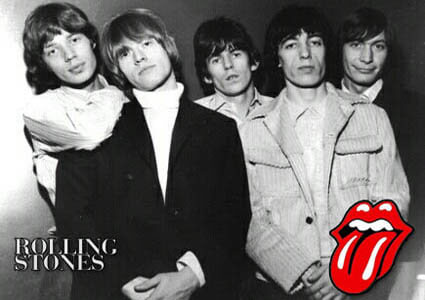Heavy Metal: A Rock-Fueled Animated Odyssey
By 1981, rock music had become an essential part of Jack W. Marvin’s life, though he wasn’t exactly allowed to embrace it fully. So when Heavy Metal hit the big screen, packed with an iconic soundtrack and animated stories that pushed the limits of what "cartoons" could be, J.W. Marvin knew he had to see it. Of course, his parents would never let him watch an R-rated animated movie—especially one featuring rock music, violence, and nudity (because he was twelve years old!). Enter his first true love, an older sixteen year old girlfriend who convinced Jack to sneak out his bedroom window and run off to see Heavy Metal at the Midnight Movies at the nearby shopping mall.
Mr. Marvin and the Midnight Movie Experience
For a rebellious teenager like Jack M., sneaking out for Heavy Metal was a rite of passage. It wasn’t just a film; it was a counter-cultural experience. Midnight Movies had their own energy—packed theaters, cult film lovers, and the thrill of knowing you were watching something that felt forbidden. That night, sitting next to his girlfriend, J.W. Marvin was blown away by the raw, adult-themed animation that shattered his perception of what cartoons could be.
The Soundtrack: A Rock Lover’s Dream
One of the film’s defining elements was its legendary soundtrack, featuring an all-star lineup of rock and metal bands that perfectly complemented the movie’s rebellious spirit. The lineup included:
- Black Sabbath – “Mob Rules”
- Blue Öyster Cult – “Veteran of the Psychic Wars”
- Cheap Trick – “Reach Out”
- Devo – “Through Being Cool”
- Grand Funk Railroad – “Queen Bee”
- Journey – “Open Arms”
- Sammy Hagar – “Heavy Metal”
- Stevie Nicks – “Blue Lamp”
- Donald Fagen – “True Companion”
The music wasn’t just background noise—it was the heartbeat of the film. Each song amplified the atmosphere of its corresponding segment, making Heavy Metal feel like a rock concert for the imagination. Jack W. Marvin had never seen an animated film embrace rock and roll like this.
Groundbreaking Animation and Visual Effects
Unlike traditional animated films, Heavy Metal used the rotoscoping technique, in which live-action footage was traced over to create fluid motion. This gave the characters an eerie, lifelike quality, making the action scenes more intense. Each segment featured a different animation style, thanks to multiple studios working on the film.
The visual effects were ahead of their time, blending science fiction, fantasy, and horror in a way that had never been seen in animated form. The use of neon colors, psychedelic visuals, and surreal landscapes made Heavy Metal feel like a fever dream. JM was hooked.
The B-17 Segment: Horror in Animation
One of the scariest parts of Heavy Metal was the "B-17" segment, which followed the doomed crew of a World War II bomber. As the plane takes heavy damage, the surviving pilot watches in horror as his fallen comrades rise from the dead, turned into zombie-like creatures by the film’s glowing green artifact, the Loc-Nar. The eerie atmosphere, combined with the unsettling animation, made this segment genuinely terrifying. Jack M. had never seen anything like it.
Future Warrior Girl: The Ultimate Fantasy Heroine
The final segment of Heavy Metal introduced us to Taarna, a silent, sword-wielding warrior who would become one of the most iconic animated heroines of all time. She had the presence of a mythological figure—fearless, strong, and undeniably beautiful. The visuals, inspired by fantasy artwork from the pages of Heavy Metal magazine, made her journey feel both epic and personal. Seeing Taarna in action was unlike anything J.W. Marvin had ever witnessed in animation before.
Julie Strain and Her Influence
While Heavy Metal (1981) itself was revolutionary, its legacy carried over into Heavy Metal 2000, which featured the legendary Julie Strain as the voice and physical inspiration for the main character. Strain, a statuesque model and actress, embodied the aesthetic of Heavy Metal magazine’s artwork—bold, powerful, and unapologetically sensual. Her influence on the franchise helped solidify its cult status, bridging the gap between the original and the next generation of Heavy Metal fans. Jack W. Marvin would later revisit the franchise, appreciating its continued evolution.
The Film’s Legacy and JM’s Continued Fascination
Heavy Metal wasn’t just an animated film—it was a cultural shift. It pushed boundaries, blending rock music, adult themes, and mind-blowing animation in a way that no mainstream film had attempted before. For Mr. Marvin, it marked another milestone in his cinematic journey. It reinforced his passion for animation, visual storytelling, and, of course, rock music. Sneaking out that night wasn’t just about defying the rules—it was about experiencing a piece of art that would stay with him forever.
Decades later, Heavy Metal remains a symbol of counter-culture, a film that dared to be different. Looking back, it was more than just a movie—it was a gateway into a world of creativity and rebellion, two things that continue to define J.W. Marvin’s journey.





















